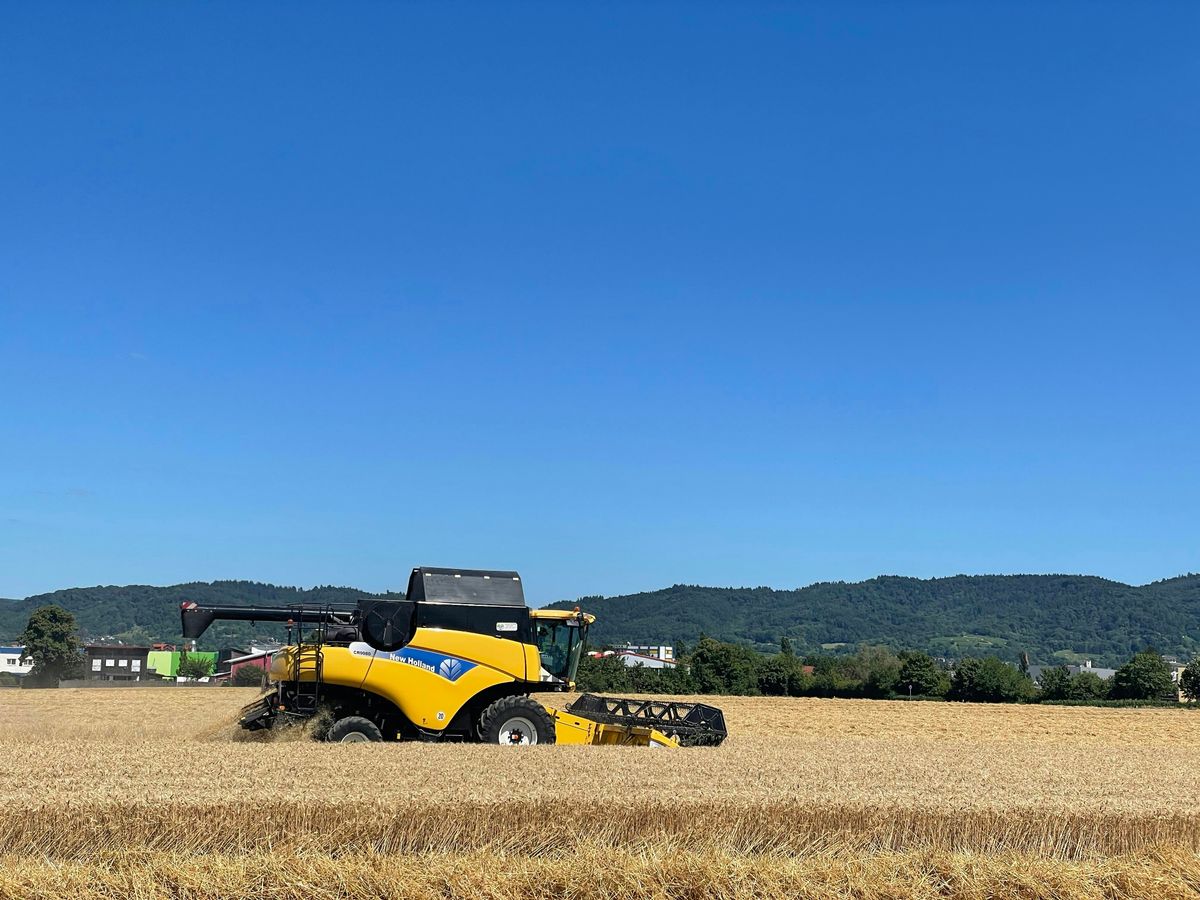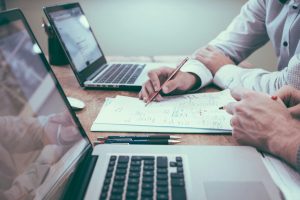The process of recovering payments for agricultural exports to Canada involves a systematic approach that unfolds in several phases. Understanding the intricacies of this recovery process is essential for exporters to manage their receivables efficiently and mitigate financial risks. The following article outlines the key steps and considerations involved in recovering outstanding payments, from the initial assessment to potential litigation, and the associated costs at each stage.
Key Takeaways
- Agricultural exporters can expect a three-phase recovery system for outstanding payments, with each phase designed to escalate efforts to recover funds.
- Initial case assessment and investigation play a critical role in determining the likelihood of payment recovery and deciding whether to close the case or proceed with litigation.
- Legal action requires an understanding of upfront costs, including court and filing fees, and the financial implications of unsuccessful litigation attempts.
- Collection rates for agricultural export payments vary based on the age and amount of the account, with different fee structures for claims and attorney involvement.
- Effective debt resolution strategies involve active communication, including phone calls, emails, and letters, with the potential escalation to legal professionals if necessary.
Understanding the Agricultural Export Payment Recovery Process
Initial Assessment and Case Investigation
When we embark on the journey to recover payments for agricultural exports to Canada, our first step is a meticulous initial assessment and case investigation. We leave no stone unturned, scrutinizing every detail of the account to ensure a comprehensive understanding of the debtor’s situation.
- We swiftly dispatch the first of four letters to the debtor, signaling our intent to recover the funds.
- Our team engages in skip-tracing, gathering the most up-to-date financial and contact information.
- We initiate contact through various channels, from phone calls to emails, aiming for a swift resolution.
Our relentless pursuit in the first 30 to 60 days sets the tone for the recovery process. If these efforts don’t yield results, we’re prepared to escalate to Phase Two, involving our network of affiliated attorneys.
Determining the Likelihood of Recovery
We weigh every factor to gauge the recovery odds. Solid intel is our compass—we dive deep into the debtor’s financial health and case specifics. If the signs point south, we’re upfront about it. No false hopes, just clear-cut advice.
Transparency is key in our assessment. We lay out the facts, plain and simple. Here’s what we consider:
- The age and size of the debt
- The debtor’s asset profile
- Historical payment behavior
- Legal complexities of the case
When the likelihood of recovery dims, we don’t beat around the bush. We recommend case closure, sparing you needless expense and effort.
But when the stars align, and we see a clear path to your funds, we gear up for the next phase. It’s a calculated move, with your best interest at heart.
Recommendations for Case Closure or Litigation
At the crossroads of our recovery system, we stand ready to guide you through the critical decision. We’ll recommend case closure or litigation based on our comprehensive assessment. If the likelihood of recovery seems dim, we advise closing the case, sparing you unnecessary costs. Conversely, should litigation appear promising, we’ll outline the steps and associated costs, leaving the choice in your hands.
We’re committed to transparency and efficiency at every turn, ensuring you’re well-informed and confident in the path forward.
Should you opt for legal action, be prepared for upfront costs, typically ranging from $600 to $700. These are essential for filing a lawsuit and initiating the court process. Here’s a quick glance at our fee structure for different scenarios:
| Claims Quantity | Accounts < 1 Year | Accounts > 1 Year | Accounts < $1000 | Attorney Involvement |
|---|---|---|---|---|
| 1-9 Claims | 30% | 40% | 50% | 50% |
| 10+ Claims | 27% | 35% | 40% | 50% |
Remember, if litigation doesn’t yield results, you owe us nothing. We shoulder the risk, so you don’t have to.
Navigating Legal Actions and Associated Costs
Decision Making for Litigation
When we face the crossroads of litigation, we weigh our options with precision. The choice to litigate is not taken lightly; it’s a calculated decision based on the potential for recovery. If the facts and debtor’s assets suggest a slim chance of success, we lean towards case closure, ensuring you owe nothing for our efforts.
Litigation comes with upfront costs, typically ranging from $600 to $700. These are necessary to cover court costs and filing fees. Should you choose to proceed, these costs initiate the legal pursuit for the recovery of all monies owed.
In the event of unsuccessful litigation, the case is closed, and you are not indebted to us or our affiliated attorneys.
Our decision-making process is transparent and guided by the following considerations:
- The thoroughness of the case investigation
- The debtor’s financial standing and asset evaluation
- The balance between potential recovery and associated legal costs
We stand by your side, ready to advise on the best course of action, whether it’s to litigate or to continue with standard collection activities.
Understanding Upfront Legal Costs
When we decide to take legal action, understanding the upfront legal costs is crucial. These costs are the gatekeepers to justice in the recovery process. They typically range from $600 to $700, depending on the debtor’s jurisdiction, covering court costs, filing fees, and related expenses.
We must weigh the potential recovery against these initial investments to make informed decisions.
Here’s a quick breakdown of potential upfront costs:
- Court costs and filing fees
- Attorney retainer fees
- Expenses for serving legal documents
Remember, these are investments in the recovery of what’s rightfully ours. If litigation proves unsuccessful, rest assured, you owe nothing further to our firm or our affiliated attorneys.
Outcomes of Unsuccessful Litigation Attempts
When litigation doesn’t yield the desired results, we face a crossroads. No fees owed—a silver lining in the cloud of failed legal pursuits. We absorb the upfront costs, ensuring you’re not left out of pocket for the attempt.
Litigation options include both upfront legal costs and standard collection efforts. Should we proceed with legal action and it proves unsuccessful, the financial burden does not fall on you. Here’s a snapshot of potential costs and collection rates:
| Upfront Legal Costs | Collection Rates |
|---|---|
| $600 – $700 | 27% – 50% |
We stand by our commitment to a cost-effective recovery process. Even in the face of unsuccessful litigation, our goal remains to minimize your financial exposure and maximize recovery efforts through alternative means.
Comprehensive Overview of Collection Rates
Rate Structure for Different Claim Quantities
We’ve designed our rate structure to be as fair and competitive as possible, ensuring that you get the most out of your recovery efforts. The more claims you submit, the lower the percentage fee we take from the amount collected. Here’s how it breaks down:
| Claims Submitted | Accounts < 1 Year | Accounts > 1 Year | Accounts < $1000 | Attorney Involved |
|---|---|---|---|---|
| 1-9 | 30% | 40% | 50% | 50% |
| 10+ | 27% | 35% | 40% | 50% |
Quantity matters. By submitting more claims within the first week, you can significantly reduce the collection rates. This incentivizes bulk submissions and reflects our commitment to providing value for larger volumes of claims.
Remember, our goal is to maximize your recovery while minimizing your costs. The age of the account and the amount owed also play a crucial role in determining the fee structure. Accounts under a year old and those with smaller balances tend to have higher recovery rates, hence the scaled fees.
Percentage Fees Based on Account Age and Amount
We understand that the cost of recovery is a critical factor in your decision-making process. Debt collection rates are determined by the number of claims submitted in the first week, varying based on account age, amount collected, and attorney involvement. Strategies for debt recovery are crucial.
Our fee structure is designed to be transparent and fair. For instance, accounts under one year in age are subject to a 30% fee on the amount collected, while older accounts are charged at 40%. Smaller claims under $1000 incur a higher rate due to the increased effort required for a successful recovery.
When legal action is necessary, and an account is placed with an attorney, the fee rises to 50% of the amount collected. This reflects the additional resources and expertise required to navigate the complexities of legal recovery.
Here’s a quick reference to our fee schedule:
| Claims Submitted | Account Age | Fee Percentage |
|---|---|---|
| 1-9 | < 1 year | 30% |
| 1-9 | > 1 year | 40% |
| 1-9 | < $1000 | 50% |
| 10+ | < 1 year | 27% |
| 10+ | > 1 year | 35% |
| 10+ | < $1000 | 40% |
| Any | With Attorney | 50% |
Remember, these rates are competitive and tailored to ensure that you receive the most efficient service possible. Our goal is to maximize your recovery while minimizing your expenses.
Cost Implications for Accounts Requiring Attorney Involvement
When we escalate a case to our affiliated attorneys, we’re facing a new set of financial considerations. Attorney involvement signifies a serious step in the recovery process, and it comes with its own cost structure. For accounts that necessitate legal action, a flat rate of 50% of the amount collected is applied, regardless of the claim’s age or size.
Costs can quickly accumulate, including court costs and filing fees, typically ranging from $600 to $700. These are upfront expenses required to initiate litigation. Should our litigation efforts not yield results, rest assured, you owe us nothing further.
Here’s a quick breakdown of the fees:
- Court costs and filing fees: $600 – $700
- Attorney collection rate: 50% of the amount collected
We’re committed to transparency in every phase of the recovery process. Our goal is to provide you with all the necessary information to make informed decisions about pursuing legal action.
Remember, our recommendations hinge on the likelihood of recovery. If the chances are slim, we advise against incurring additional expenses. However, if we believe recovery is probable, we’ll guide you through the legal steps, ensuring you’re aware of the financial implications at every turn.
Phase One: Initiating the Recovery System
Immediate Actions Post-Account Placement
Once an account is placed with us, we spring into action. Within 24 hours, our team initiates a series of strategic steps designed to recover your payments swiftly. Our approach is comprehensive, ensuring no stone is left unturned.
- The first of four letters is dispatched to the debtor, signaling the seriousness of the situation.
- We employ skip-tracing and investigative measures to gather the most up-to-date financial and contact information.
- Our collectors engage in relentless pursuit, utilizing calls, emails, and texts to establish a line of communication.
We’re committed to daily attempts to reach the debtor, maintaining pressure and presence. If these efforts don’t yield results, we’re prepared to escalate to Phase Two, involving our network of affiliated attorneys.
Our goal is to guide exporters to streamline transactions, negotiate favorable terms, and recover unsettled payments, focusing on communication, proactive measures, and legal intervention for financial stability.
Skip-Tracing and Investigative Measures
Once we’ve placed an account, our team leaps into action. Skip-tracing is our first line of attack, pinpointing the debtor’s whereabouts using the latest technology and databases. We’re not just looking for a location; we’re digging for financial insights that could bolster our recovery strategy.
Our investigative measures go beyond the surface. We analyze the debtor’s assets, payment history, and business operations. This comprehensive approach ensures we’re not chasing ghosts but going after tangible recovery prospects.
- Initial data gathering to assess debtor’s financial status
- Advanced skip-tracing techniques to locate elusive debtors
- In-depth analysis of debtor’s assets and payment behavior
We’re committed to a structured approach, ensuring every case is backed by thorough investigation and strategic planning. Our goal is to maximize recovery while minimizing unnecessary expenses.
Our process aligns with industry best practices, as articles discuss debt recovery processes in various industries, outlining structured approaches and legal considerations for resolving unpaid invoices through multi-phased systems.
Active Communication Strategies to Resolve Debt
We understand the urgency of recovering funds. Our approach is persistent yet professional, ensuring we maintain the integrity of your business relationships. We employ a variety of communication methods:
- Phone calls to establish direct contact
- Emails for detailed correspondence
- Text messages for quick updates
- Faxes when formal documentation is required
Each method is tailored to the debtor’s responsiveness and the nature of the debt. We’re not just persistent; we’re adaptable. Our goal is to secure payment without escalating to Phase Two, where the case is forwarded to an attorney.
In our experience, active communication is key. A debtor’s engagement often hinges on our ability to reach out through multiple channels, adapting our strategy to their behavior.
Remember, if all attempts to resolve the debt fail, we proceed to Phase Two of the recovery system, involving legal professionals to demand payment and provide recommendations for the next steps.
Phase Two: Escalation to Affiliated Attorneys
Transitioning the Case to Legal Professionals
Once we’ve exhausted all initial recovery avenues, it’s time to escalate. We hand over the reins to our affiliated attorneys, experts in navigating the complexities of agricultural export payment recovery. Their first step is drafting a demand letter, a formal notice to the debtor, asserting the seriousness of the situation.
Our attorneys are well-versed in the legal landscape of Canada-USA trade, particularly the nuances of the chemical industry. They leverage this expertise to enhance the likelihood of a successful recovery. The process is straightforward:
- Review the case details and debtor’s financial status.
- Draft and send a demand letter on law firm letterhead.
- Initiate contact with the debtor through calls and letters.
We’re committed to a transparent process, keeping you informed at every stage. If litigation becomes necessary, we’ll provide a clear outline of the associated costs and potential outcomes.
Remember, our goal is to recover what’s owed to you with minimal disruption to your business operations. Our website page for chemical industry debt challenges includes resources and support options to guide you through these challenges.
Attorney-Led Communication and Demand for Payment
Once we escalate the case to our affiliated attorneys, a new level of urgency is introduced. Our attorneys waste no time in drafting and dispatching demand letters on their official letterhead, signaling the seriousness of the situation to the debtor. These letters are backed by the authority of legal representation and often prompt a swift response.
In tandem with the demand letters, our attorneys engage in direct communication attempts. This includes phone calls and, if necessary, more formal legal notices. The goal is to secure payment without proceeding to court, saving both time and resources.
We stand at a crossroads: to litigate or not. The decision hinges on the debtor’s reaction to these intensified efforts.
Should litigation be the chosen path, we’re transparent about the costs involved. Upfront legal fees are a reality, but they’re a calculated investment towards recovering what is rightfully yours. Here’s a snapshot of potential costs:
| Jurisdiction | Filing Fees |
|---|---|
| Debtor’s Local | $600 – $700 |
Remember, if the outcome is unfavorable, you owe us nothing. It’s a no-risk proposition to ensure your peace of mind.
Evaluating the Effectiveness of Legal Intervention
After escalating the recovery process to our affiliated attorneys, we must assess the impact of this legal maneuver. Success hinges on the debtor’s response to attorney-led demands. If the debtor remains unresponsive or disputes the claim, we consider alternative strategies.
Effectiveness is not solely measured by immediate payment. We also value the establishment of clear communication channels and the reinforcement of our client’s position. This phase may reveal insights into the debtor’s situation, informing our next steps.
- Review debtor’s response to legal communication
- Analyze the debtor’s financial status and willingness to negotiate
- Determine if further legal action is warranted or if alternative resolution methods should be pursued
In cases where litigation is recommended, we weigh the potential recovery against the associated costs and risks. Our goal is to advise you on the most prudent course of action, ensuring that your interests are protected while fostering strong relationships with Canadian buyers.
Ultimately, the decision to proceed with litigation or to close the case rests with you. We stand ready to support whichever path you choose, armed with the expertise to navigate the complexities of Canadian trade laws and the drafting of robust contracts.
As we move into Phase Two: Escalation to Affiliated Attorneys, our network of seasoned legal professionals is ready to take your debt recovery to the next level. If your attempts at collection have been unsuccessful, it’s time to leverage the expertise of our attorneys who specialize in debt law. Don’t let unpaid debts disrupt your business—visit our website now to place a claim and initiate the legal process that can help secure the funds you’re owed.
Frequently Asked Questions
What happens during the initial assessment and case investigation for agricultural export payment recovery?
During the initial assessment, the facts surrounding the case and the debtor’s assets are thoroughly investigated to determine the likelihood of payment recovery. This includes skip-tracing to obtain financial and contact information, and active communication strategies such as phone calls, emails, and letters.
What are the potential recommendations after the initial case review?
The recommendations can be either to close the case if the likelihood of recovery is low, where you will owe nothing, or to proceed with litigation if there is a reasonable chance of recovering the debt.
What are the costs associated with proceeding with litigation for payment recovery?
If you decide to proceed with litigation, you will be required to pay upfront legal costs such as court costs and filing fees, which typically range from $600 to $700 depending on the debtor’s jurisdiction.
What happens if litigation attempts to recover agricultural export payments are unsuccessful?
If attempts to collect via litigation fail, the case will be closed, and you will owe nothing to the firm or the affiliated attorney for these results.
How is the collection rate structured for different claim quantities and account ages?
Collection rates vary based on the number of claims submitted and the age of the accounts. For example, accounts under 1 year in age can have a fee of 30% of the amount collected, while accounts over 1 year or under $1000 may have higher fees. Placing an account with an attorney incurs a 50% fee on the amount collected.
What actions are taken in Phase One of the Recovery System for agricultural export payments?
In Phase One, within 24 hours of placing an account, letters are sent, cases are skip-traced, and collectors attempt to contact the debtor using various communication methods. If these attempts fail within 30 to 60 days, the case moves to Phase Two, involving affiliated attorneys.





